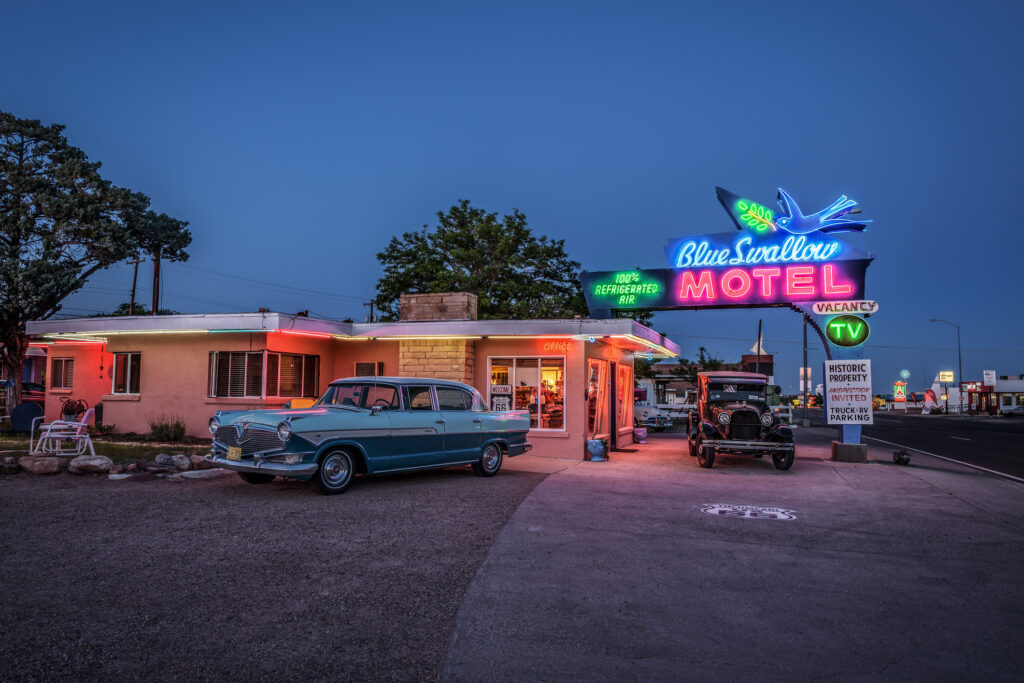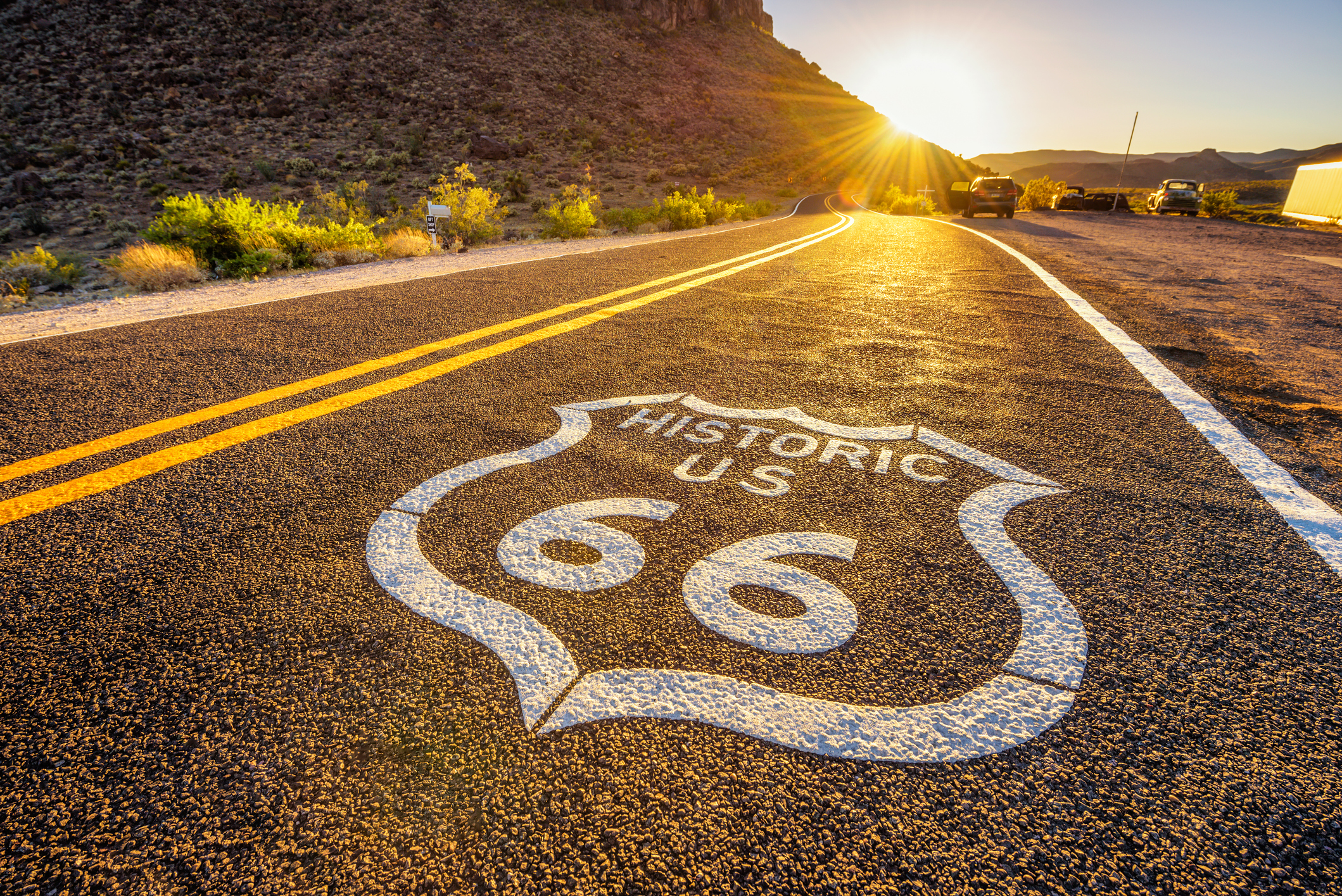Route 66, often called the Main Street of America or the Mother Road, is more than just a highway; it symbolizes America’s cultural heritage. This iconic road, stretching from Chicago to Santa Monica, has been the subject of countless songs, movies, and books, all of which have contributed to its legendary status.
A Brief History of Route 66
The U.S. Highway System was Established on November 11, 1926, and included Route 66 as one of the original highways. It was initially a 2,448-mile road that connected urban cities and rural America. It ran from downtown Chicago, Illinois, to Santa Monica Pier in California and passed through the states of Missouri, Kansas, Oklahoma, Texas, New Mexico, and Arizona.
Route 66 served as a primary path for those heading west, especially during the Dust Bowl of the 1930s. The road was the lifeblood of many communities. People doing business along the route become prosperous due to the booming popularity of the highway.
However, the glory days of Route 66 started to dwindle with the advent of the Interstate Highway System in the 1950s. By 1985, The Mother Road was officially decommissioned as a U.S. Highway. Despite this, Route 66 has remained a nostalgic symbol of a simpler time, an era of classic cars, roadside diners, and a uniquely American spirit of adventure.

Iconic Sites Along the Way
Traveling Route 66 is like taking a journey through American history. Here are some of the iconic sites that you can explore along the way:
- The Art Institute of Chicago: Start your journey with a visit to one of the oldest and largest art museums in the United States.
- Chain of Rocks Bridge, Missouri: This mile-long bridge was a significant landmark on Route 66. It is known for its distinctive 30-degree bend midway across the Mississippi River.
- Cadillac Ranch, Texas: An eccentric art installation featuring ten Cadillacs buried nose-down in the ground. Visitors are encouraged to leave their mark with spray paint.
- The Blue Whale of Catoosa, Oklahoma: A charming roadside attraction, this giant blue whale has delighted families since the 1970s.
- Petrified Forest National Park, Arizona: This National Park is known for its fossilized trees that lived in the Late Triassic Epoch about 225 million years ago.
- Santa Monica Pier, California: The journey ends at this iconic pier, which offers a classic Ferris wheel, an aquarium, an amusement park, and stunning Pacific Ocean views.
Route 66 Today
Today, Route 66 has found new life as a route of historic significance. Many parts of the road have been designated a National Scenic Byway named “Historic Route 66”. It has become a destination for road trippers, history buffs, and those seeking to experience a slice of Americana.
Many of the old gas stations, motels, and eateries have been preserved and restored, offering a glimpse into the past. Museums dedicated to the road’s rich history have sprung up, and annual festivals celebrate its cultural significance.
To Wrap It Up
Route 66 is more than just a two-lane highway; it’s a testament to America’s love of the open road. It’s a journey through time, filled with historical landmarks, unique roadside attractions, and a sense of adventure that continues to captivate travelers from around the world. Whether you’re a history enthusiast, a road trip junkie, or someone looking for a unique travel experience, Route 66 offers something for everyone.
This is a multipost piece covering each of these scenic American Byways. Stay tuned next week as we cover California Highway 1.
Be sure to follow us on Instagram and Facebook for more behind-the-scenes fun.
Until next time, everyone,
Peace, Love, and Happiness.



Very Nice!! Keep up the good work. Can’t wait to read the rest of the posts.
Robert
Thank you for stopping by and leaving a comment.
Greatly appreciated.
Dan